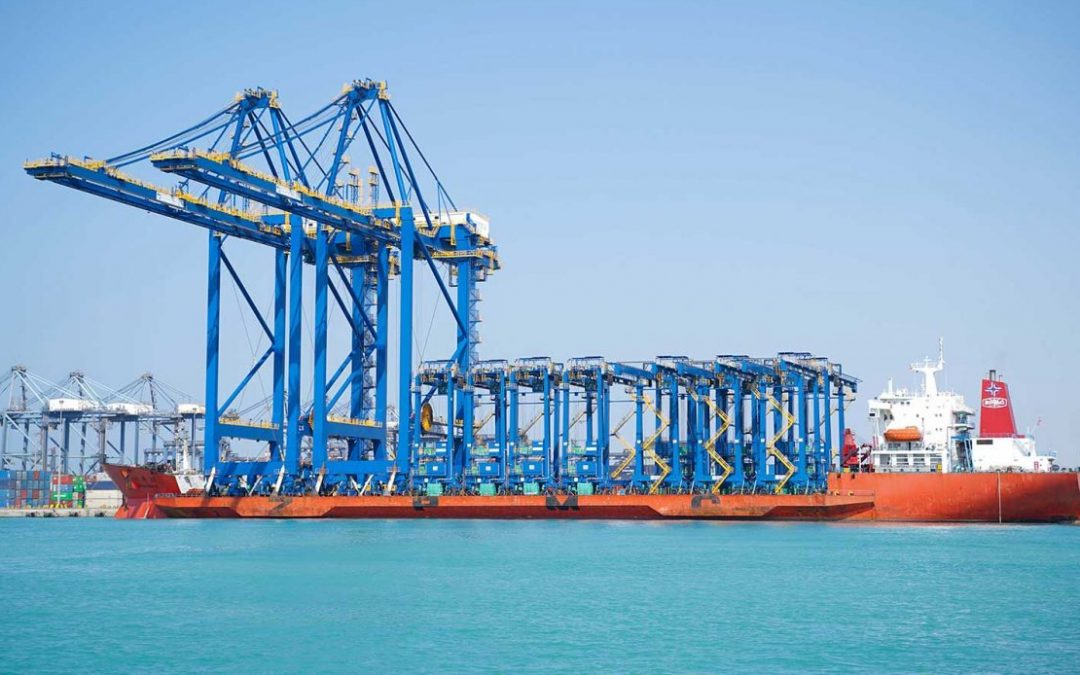Index-linked contracts are becoming increasingly popular in ocean freight container shipping, but some contain a potential flaw that could cost shippers vast sums of money.
The problem arises when a shipper uses 40ft equivalent containers (FEU) to transport their goods, but the contract with the service provider (carrier or freight forwarder) is linked to a 20ft equivalent container index (TEU).
To illustrate the potential magnitude of this issue, if a business is shipping 1 000 FEUs from China to South America and paying rates based on a TEU index, it could be costing upwards of 4.3 million dollars too much at today’s rates.
Why are index-linked contracts needed?
In the past five years, the ocean freight container shipping industry has faced almost unfathomable disruption through the Covid-19 pandemic and major black swan events such as the recent conflict in the Red Sea.
This market volatility saw accusations of opportunistic behavior directed at carriers as shippers with long term contracts faced the scenario of having cargo rolled or being pushed onto sky-rocketing spot rates.
For example, the Transpacific trade from the Far East to US West Coast saw average spot rates increase by 620% between October 2019 and February 2022 as the Covid-19 pandemic wreaked havoc, before crashing back down to USD 1 250 per FEU in April 2023.
Then came the Red Sea crisis, which has seen the average spot rate soar again, increasing by more than 300% since mid-December 2023 to stand at USD 6 620 per FEU on 19th June 2024.
Index-linked mechanisms are included in long-term contracts so the rate the shipper pays to the carrier or freight forwarder is not fixed, but rather tracks the markets in a way that is acceptable to both parties. Essentially, the shipper and carrier agree to share the risk and reward of rising and falling markets.
Importantly, it also means there is less need for constant renegotiation of rates – especially during times of significant market movements and black swan events – allowing carriers and shippers to focus on service delivery and supply chain resilience.
The potential flaw
The rationale for index-linked contracts is clear… but there is one problem.
Global ocean trade is dominated by 40ft containers – in fact only 20% of all goods are shipped in 20ft containers.
Yet, many index-linked contracts benchmark against TEU indexes rather than FEU indexes.
This should not be an issue because, if two 20ft containers are the equivalent of one 40ft container when it comes to pricing, then the FEU freight rate should just be double the TEU freight rate (excluding THCs).
However, the price of a 40ft container is not double that of a 20ft container – far from it – and therein lies a fundamental flaw.
The financial implications
To illustrate the impact of shipping FEU against a TEU index, let’s look at two main trade lanes from Shanghai to Antwerp and from Shanghai to Santos.
These trades are chosen to illustrate the extremes of this situation, but they are also of great significance to global supply chains, given one in eight containers that ever goes to sea is shipped from Asia to Europe and South America.
Using the period from 2020 to May 2024, the average cost of one FEU on the Shanghai to Santos trade was 10% higher than one TEU. At its narrowest point the spread between these two rates was just USD 9 per container, while at its widest point the spread was USD 2 633. In percentage terms a FEU was between 1% and 27% more expensive.
On the Shanghai to Antwerp trade, the average cost of one FEU was 79% higher than one TEU. At its narrowest point the spread between these two prices was USD 368, while at its widest point the spread was USD 6 592. In percentage terms a FEU was between 64% and 93% more expensive.
The potential cost to shippers
It is now clear that two 20ft containers are not the same as one 40ft container (and conversely one 40ft container is not the same as two 20ft containers). But when these two equipment types are benchmarked against each other by doubling the TEU rate, the figures become even more stark, as shown in the table below, using the timespan of 2020-2024:
The financial ramifications of this potential flaw in some index-based contracts highlight the critical importance of accessing FEU and TEU data.
What can shippers do to protect themselves against paying too much?
The very simple answer is to make sure you benchmark/index against the correct equipment type. If you ship on 20ft containers, you must use TEU data. If you ship on 40ft containers, you must use FEU data.
That is the only way to ensure you are paying the correct rate to ship your goods. If shippers get this wrong the financial implications could be extremely serious.
Even if a service provider offers a discount against the TEU index as part of the contract, caution must still be exercised. For example, in the case of the Shanghai to Santos trade, a discount of 44% would be needed to offer parity with a FEU index. The problem for the shipper in this scenario is the FEU/TEU price differential is not static – as highlighted previously, the delta is volatile, so any discount offered on day one of the contract may be insufficient within a short period of time.
It must be stressed that index-linked contracts are a fundamentally good idea. Not only do they offer greater financial visibility, they also help to build more trusting relationships between shippers and services providers – something of critical importance during black swan events.
They also save time and resources by removing the need for constant renegotiations every time there is a turn in the market.
But index-linked contracts only work if it suits both parties – there cannot be one winner and one loser.
Therefore, it is imperative that these contracts are benchmarked against the appropriate index and the correct data is used.
Get it right, and an index-linked contract could bring huge benefits to a business. Get it wrong and it could cost millions of dollars and put supply chains at risk.
Source: Hellenic Shipping News






